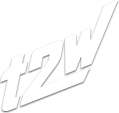TerryPenny
Newbie
- Messages
- 3
- Likes
- 0
Hi, I've only been trading sinds October - About 9 months.
This is my system so far:
1. I use 2% of my account to determine the max value of my stop loss.
2. Calculate Stop loss for 1 Share.
2 Divide the max stop loss by stop loss for 1 share.
So 2 % of 10.000 is 200
1 Share is 50
Stop loss is 10%, so 5 each
Shares to buy = 200 / 5 = 40
I made a spreadsheet for that in open office, it also calculates other things like trailing stop, possible profits or loss, %raise needed to cover expenses, win/lose ratio...
3. I sell half at 20% profit, This covers my remaining 10% stop loss and expenses.
The percentage varies on what the stock does, for example if it's at + 22 % I place a stop for half at 20, if it raises more I move my stop.
If It's at 16% up and It's a bad day I'll sell half anyway. Then I fiddle with the remaining stop loss until I'm safe.
4. If the stock drops, but I think it's because my entry was badly timed, I buy half again (1 time only), but I treat it as a separate trade, with his own stop.
The intent here is not to average down.
5 I only buy stocks that are going up over a long time. price is close to EMA 20 and 50 and above 200.
6 Once They go up more than 20% I start moving my stop up.
That's it, no leverage, calls or puts. (otherwise I have to pay Tax to the Gov. Belgian rules...)
I try to follow these rules but sometimes.... I mess up
Result : Invested 5000 Euro, 6 months later added 5000, , Changed to dollar to trade Nasdaq
Lost 10% to Euro - dollar exchange price falling
Lost 15% because of "Tariffs" market drop
594 $ went to Broker fees and exchange tax
Still up 11 % so 11.097 euro, can't see it directly in dollars without having my platform changed to dollar.
67 % of trades profit, average win = 18%, average loss 14%
Drawback : 1200 euro during Tariff scare? no idea. Is it considered a drawback if you keep the shares?
Best trades : Robinhood markets, POET, Tesla, NNE (nasdaq)
Lessons learned: Don't lower your stop. Don't drink while trading.
I'd like to hear what long time traders think of this, just lucky?
I'm rather happy with the results, I learned some valuable things without losing money, And I beat the intrest I would have had in the bank.
This is my system so far:
1. I use 2% of my account to determine the max value of my stop loss.
2. Calculate Stop loss for 1 Share.
2 Divide the max stop loss by stop loss for 1 share.
So 2 % of 10.000 is 200
1 Share is 50
Stop loss is 10%, so 5 each
Shares to buy = 200 / 5 = 40
I made a spreadsheet for that in open office, it also calculates other things like trailing stop, possible profits or loss, %raise needed to cover expenses, win/lose ratio...
3. I sell half at 20% profit, This covers my remaining 10% stop loss and expenses.
The percentage varies on what the stock does, for example if it's at + 22 % I place a stop for half at 20, if it raises more I move my stop.
If It's at 16% up and It's a bad day I'll sell half anyway. Then I fiddle with the remaining stop loss until I'm safe.
4. If the stock drops, but I think it's because my entry was badly timed, I buy half again (1 time only), but I treat it as a separate trade, with his own stop.
The intent here is not to average down.
5 I only buy stocks that are going up over a long time. price is close to EMA 20 and 50 and above 200.
6 Once They go up more than 20% I start moving my stop up.
That's it, no leverage, calls or puts. (otherwise I have to pay Tax to the Gov. Belgian rules...)
I try to follow these rules but sometimes.... I mess up
Result : Invested 5000 Euro, 6 months later added 5000, , Changed to dollar to trade Nasdaq
Lost 10% to Euro - dollar exchange price falling
Lost 15% because of "Tariffs" market drop
594 $ went to Broker fees and exchange tax
Still up 11 % so 11.097 euro, can't see it directly in dollars without having my platform changed to dollar.
67 % of trades profit, average win = 18%, average loss 14%
Drawback : 1200 euro during Tariff scare? no idea. Is it considered a drawback if you keep the shares?
Best trades : Robinhood markets, POET, Tesla, NNE (nasdaq)
Lessons learned: Don't lower your stop. Don't drink while trading.
I'd like to hear what long time traders think of this, just lucky?
I'm rather happy with the results, I learned some valuable things without losing money, And I beat the intrest I would have had in the bank.
